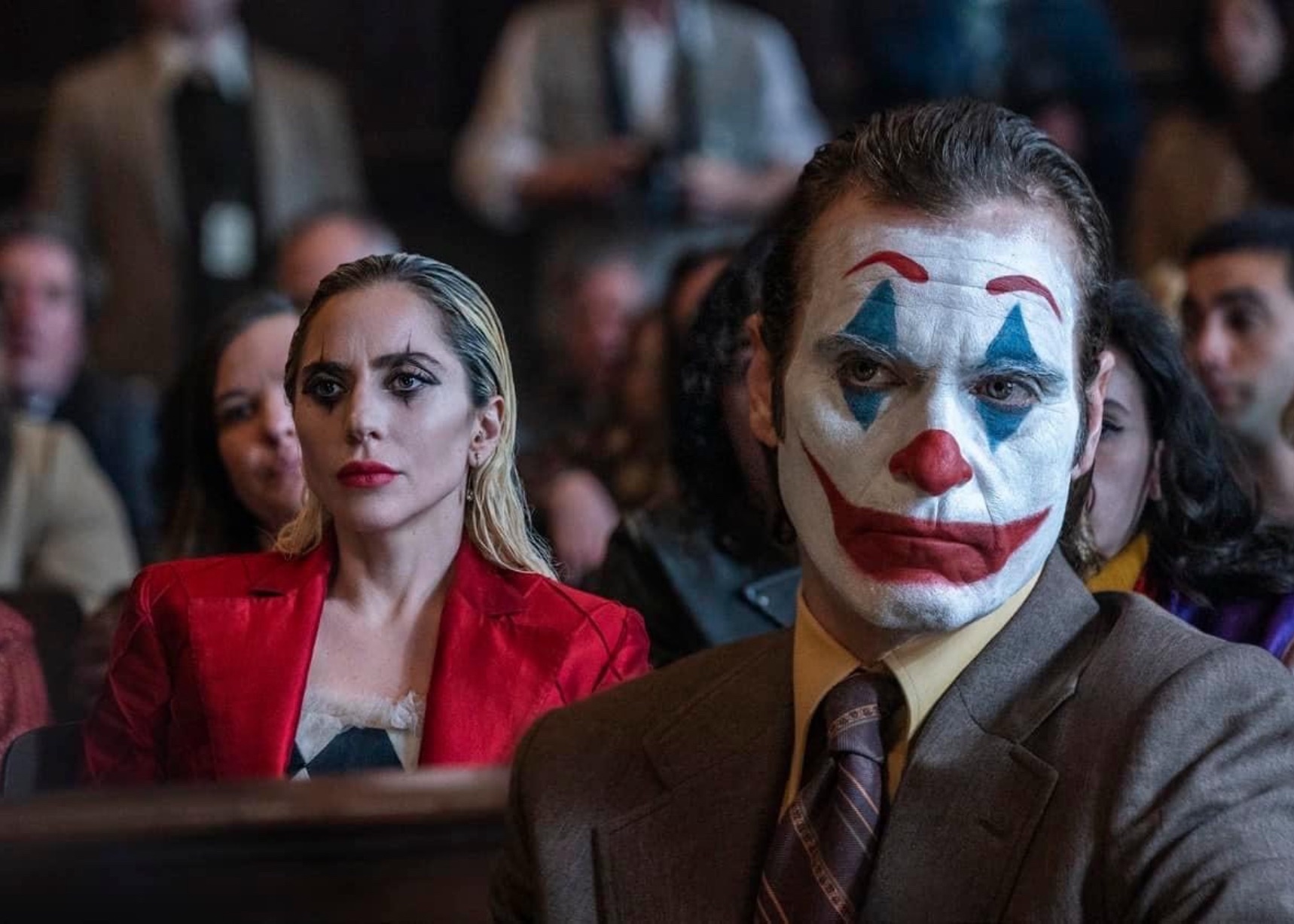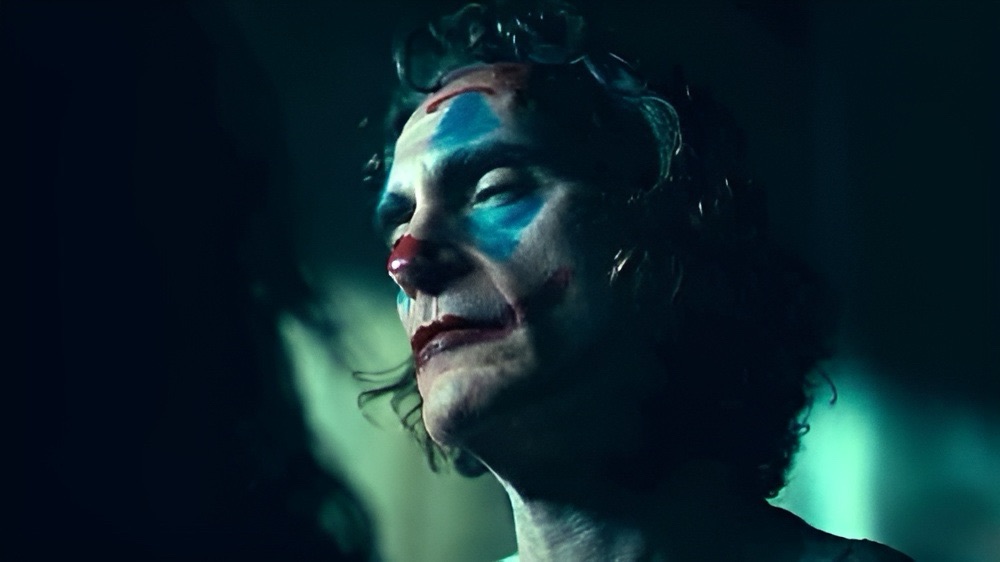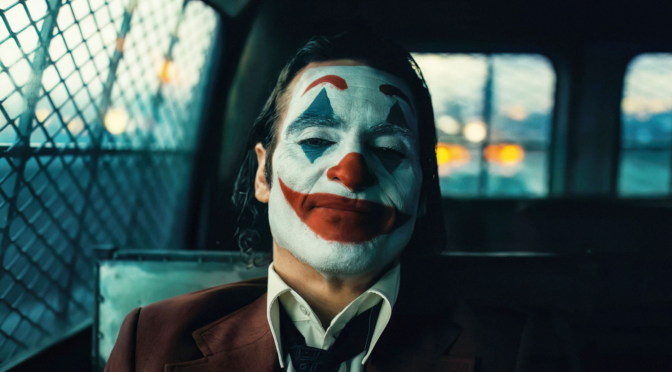Although a pale imitation of the superior cinema of Scorsese and Lumet to which it was indebted, 2019’s JOKER was undoubtedly a cultural phenomenon. It was the first film with an MPAA ‘R’ rating to make over a billion dollars at the global box office, received Oscars and Venice’s Golden Lion, and was the nexus of a thousand think pieces – some wildly overblown and some more thoughtful – about the implications of those critical and financial garlands. JOKER: FOLIE Á DEUX was never likely to live up to that and is a less notable film in many ways. But while this pseudo-musical exercise feels rather tiresome, the film’s relationship to its predecessor is a fascinating one rarely seen in franchise filmmaking.
Arthur Fleck finds himself incarcerated following the first film’s murderous rampage, which culminated in him – in full Joker regalia – shooting a late-night TV host during the broadcast. As his lawyer constructs a defence based on mental incompetence (arguing that the ‘Joker’ is a separate identity to Arthur), he strikes up a romantic connection with an inmate of the less secure wing, Harleen “Lee” Quinzel (Lady Gaga). Arthur’s adoring fanbase as the Joker sets up a conflict within the film around his iconic identity. Is it one that was valorous and triumphantly assumed? Or is it a tragic mental shield from his miserable circumstances in life to this point? And in either case, who is it serving? His breaks from reality or moments of overwhelming emotion are expressed via musical segments with Lee, which punctuate the film.
As a sequel to JOKER, which was a handsome but shallow exploration of its themes, FOLIE Á DEUX doesn’t work on many levels. The decision to approach it as a musical is confusing, especially when many of the staged segments feel so lifeless, and Hildur Guðnadóttir’s score was probably the most compelling element of JOKER. One could argue that this reflects Arthur’s inherent lack of showmanship, which is evident in JOKER, and highlights the Joker persona for the artifice it is, but it still results in a limp film. More unforgivably, FOLIE Á DEUX is simply a very dull film for long swathes of its runtime. The script and dialogue are often as thin and poorly conceived as JOKER, but the plot is so hilariously sparse the sequel cannot even make up for this with mere set pieces. However, the most noteworthy aspect of FOLIE Á DEUX – its dialogue with the more successful JOKER – is, fortunately, the one part which does hold some interest.

”…the most noteworthy aspect of FOLIE Á DEUX – its dialogue with the more successful JOKER – is, fortunately, the one part which does hold some interest.”
The last piece of significant franchise filmmaking that thumbed its nose at its predecessor so firmly was 2015’s THE LAST JEDI. Rian Johnson’s film was replete with references to leaving the past behind (“Let the past die, kill it if you have to”) and upended many of the revered icons of that series. THE LAST JEDI is reviled in some corners for its similar rejection of the franchise pedestal upon which it stood. FOLIE Á DEUX will likely suffer a worse fate, and while the decision to position it as a musical probably doesn’t help, blaming audience irritation solely on some delusional show tunes would be a mistake. FOLIE Á DEUX goes even further than Johnson’s film by not only tearing down the icons of its origin but often ridiculing them. The staircase upon which Joker danced triumphantly in 2019 is the scene of Arthur’s lowest point in FOLIE Á DEUX. Nobody in FOLIE Á DEUX cares about Arthur Fleck; they only care about Joker and what he represents to them or can do for them. The symbol for the downtrodden masses supposedly established in the first film is the anchor around Arthur’s neck in this one. It is a persona tempting for him to fully re-adopt, but one that will surely sink him. The film actively and aggressively rejects and deconstructs its lead character’s mythos. By the time Leigh Gill has reprised his role as Gary Puddles – a colleague of Arthur’s in the first film – during the trial, any notions of Robin Hood-style courage are a poor joke. Rather than growing into whatever symbol many had imagined, the idea of Joker collapses in a heap of this story’s deliberate design.

”Rather than growing into whatever symbol many had imagined, the idea of Joker collapses in a heap of this story’s deliberate design.”
For all the missteps in FOLIE Á DEUX, the film’s thesis is much more precise and effective than that of JOKER. Where JOKER was a vacuous attempt to examine the effect of continually trampling upon desperate or vulnerable people, FOLIE Á DEUX is a much better – if still heavily flawed – interrogation of how stories like Arthur’s are co-opted for varied agendas and how false idols of the disaffected are created. There’s also an element of how the spark of resistance can be co-opted by meek idiots with little understanding of what they are railing against, instead clinging on to a figurehead. The culmination of the film’s courtroom scenes has evident parallels with the aftermath of January 6th at the United States Capitol. The notion that events instigated for personal satisfaction or gain can have wider ramifications is present at the film’s climax. A subtle background element emphasises that Arthur – and by extension, the film JOKER – was an unwitting clown that may give birth and expression to even gnarlier outbursts of disaffection.
JOKER was an empty homage, beholden to an era of cinema with more intelligence than it could hope to muster. FOLIE Á DEUX – even if drawing from other sources (musical THE UMBRELLAS OF CHERBOURG seems to get an explicit visual reference, for instance) – is beholden to very little except its own predecessor. However, it is a more coherent character and societal study. For all the tiresome elements and plodding narrative, the renunciation of reverence makes it a more interesting film than it has any right to be. The subtitle can be translated as “shared madness”, but this sequel leaves it very open whether to take that as the literal shared delusions of Arthur and Lee or that of the first film and the frequently hysterical reactions of much of its audience. FOLIE Á DEUX may mean this iteration of the Joker leaves cinemas with a whimper, but at least it finally had something to say with its dying breath.

